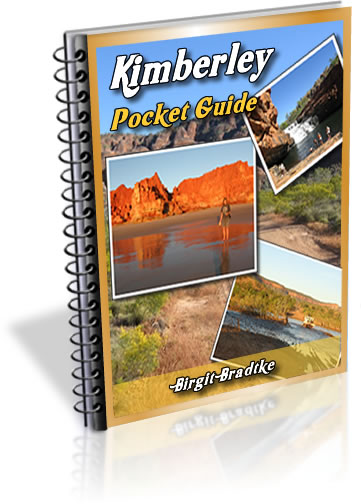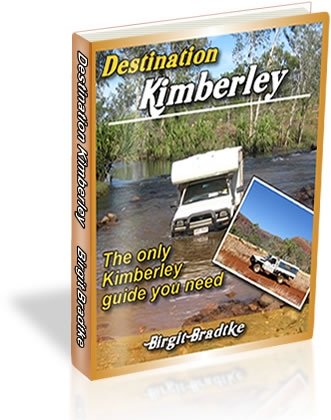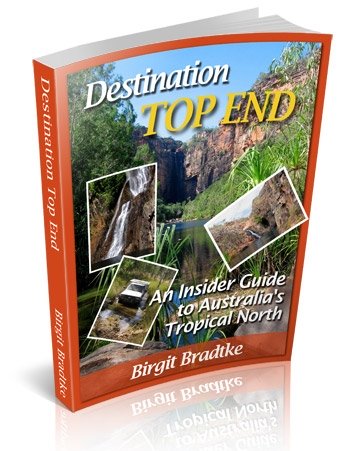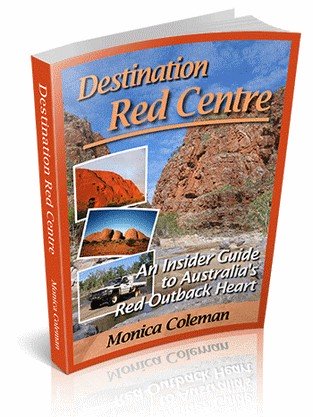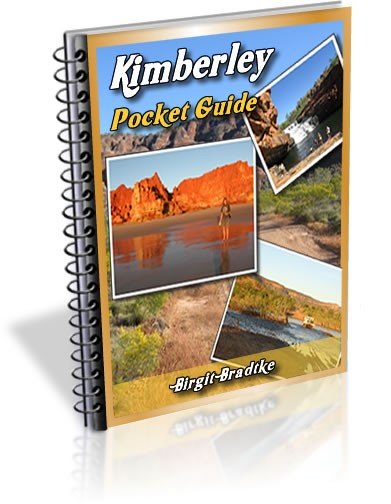Kimberley Environmental Problems
Not all is well in the Kimberley
Supposedly the Kimberley is pristine and untouched, the world's largest true wilderness.
In reality few if any areas within the Kimberley remain truly untouched. All of the Kimberley has been changed by man in some way or other. And that's without taking into account any global warming effects.
We were lucky when neither the plans for bauxite mining on the Mitchell Plateau (picture a totally denuded plateau) nor for the massive gas plant at James Price point on the Dampier Peninsula went ahead.
Without the infrastructure that the gas plant at James Price Point would have created, other industrialisation projects will also be more difficult. Phew.
For now the tide seems to have turned and things seem to be moving towards creating more conservation areas, protecting Aboriginal heritage and giving indigenous people more of a say in how their traditional lands should be developed.
Alcoa and Rio Tinto gave up their mining leases on the Mitchell Plateau to allow it to be included in a proposed Kimberley national park, and instead of the big gas plant we got the Roebuck Bay Marine Park.
Mind you, it's not like the other mainstay of the Kimberley economy, tourism, isn't affecting the environment. The heavy marketing of the Kimberley as a top destination has increased tourist numbers to a point where I feel we now have more visitors than the region can currently sustain.
And that of course means, more infrastructure will be needed! Still, as long as it is created in a sensible way, it is a better way forward then a massive industrialisation of the region.
The thing is, even without those influences, many of our actions and behaviours have changed the face of the region, gradually, over the course of many years. And that destruction, too, is ongoing and getting worse. You can read more about the existing issues below.
The Kimberley - An Untouched Wilderness??
A lot of destruction in the Kimberley happened long before the government came up with the brilliant idea to bulldoze the Kimberley to make everyone rich, and long before mass tourism was even a thing up here.
Humans have affected the Kimberley in many ways, directly and indirectly. Direct influences can be seen everywhere we live. Land is cleared, roads are built, rivers are dammed, rubbish is dumped and so on...
Cattle Stations
Extensive cattle grazing, combined with the damage that cattle do to the fragile soils just by wandering around, has led to serious erosion problems. Cattle also change the species distribution by eating what they like best, leaving unpalatable plants behind, which soon dominate the landscape.
Once the balance is upset it's easy for introduced weeds to get a foothold. Many introduced weeds grow much more vigorously than local plants and outcompete and displace the native vegetation. Once the plant balance is upset it will upset the life cycle of animals that depend on those plant communities for food, shelter or breeding.
The problems are most obvious in the lowlands along the Ord and Fitzroy Rivers in the south and east. This is the centre of the Kimberley cattle industry and also where the cattle industry started. Large areas are badly eroded and it's impossible to overlook the weed problem.
Introduced Weeds
Once weeds have gained a foot hold they spread. If the seeds have spikes and burrs then animals spread them. If the seed is encapsulated in fruit flesh then the birds spread them. Wet season floods spread seeds downstream.
Then you have vehicles and tourists helping along, too, by transporting seeds and soil on their cars, their clothes and their hiking boots. It quickly becomes impossible to contain any infestation.
Noogoora Burr was one of the earliest and worst infestations that led to big areas along the Ord and Fitzroy being quarantined, but today there are dozens of exotics that have joined Noogoora Burr. Some of them were introduced accidentally but many were brought in deliberately: as good cattle feed, as possible agricultural crops, as garden plants. (The latest blunder was the deliberate introduction of neem trees to the Ord irrigation area.)
Feral Animals
Introduced animals are just as destructive. Wild donkeys, horses, camels, buffaloes and pigs... Few overseas visitors are aware that cats are a serious threat and plague. The numbers of feral cats are exploding across all of Australia. This are not your cute little pussy cats any more. Our feral cats are large, vicious, supremely adaptable and highly efficient killers. Our native birds and lizards are no match for them.
The highly poisonous cane toad is continuing its unstoppable march across northern Australia and reached the Mitchell Plateau and the Leopold Ranges Conservation Park (includes Bell Gorge) in the 2017/18 wet season.
Any native animals that prey on frogs and toads are at risk. Freshwater crocodile and goanna populations have plummeted or disappeared wherever the cane toad became established.
Emergency programs tried to relocate vulnerable species like the Northern Quoll to offshore islands in the hope to save them from extinction. The rare pygmy crocodile had disappeared from its location in Arnhem Land and had been recorded in WA at only other waterhole, on the WA border, just before the cane toads reached it. Only discovered and already lost...
Despite the impressive fight that the Kununurra community has put up there is no solution in sight. Some money is being spent in the Kimberley to at least survey and record what we are about to lose, but at this point that seems to be all we can do. The cane toads will be on the west coast sooner or later.
Agriculture
Lake Argyle and the now permanent flow of the lower Ord River have changed the face of the area forever. While the Ramsar protected new wetlands are an attraction and bird paradise in their own right, they are man made and the project brought a host of other problems with it.
The nasty open channel system that is used in the Ord River Irrigation Area leads to massive evaporation and seepage, which means rising groundwater levels and salinity. Broad acre crops like melons or pumpkins are flood irrigated, leading to run-off of nutrients and chemicals into the channels, rivers and groundwater. Many fields are bare over the wet, so top soil is washed and blown away.
Increased run-off of solids, combined with the lack of the annual wet season flush means the mouth of the tamed and controlled Ord is silting up. So is the main Argyle dam because of erosion due to the clearing and damage from overgrazing in the catchment area.
The stage 2 expansion of the Ord River irrigation scheme is the largest proposed land clearing operation in Northern Australia. None of the existing issues have been sufficiently addressed.
Bush Fires
Many people here can't imagine camping without a camp fire. A fire is often needed for cooking and is just as important to socialise around and spin yarns in the evening.
Well, in many areas, especially national parks and conservation areas, fires are not allowed. Period. In other parts of the Kimberley fires may be allowed at times and fire bans may be in place at other times.
Part of the reason for the bans is the risk of bush fires. I guarantee that no matter when you visit, you will see bush fires on your travels. The whole Kimberley burns, every year. Most travellers assume these are managed burns or that it is necessary for the country to burn so new seeds can germinate. Nonsense.
Very few of those fires are managed, though many have been lit on purpose. Arson is a big problem, but so are fires that are lit accidentally and possibly the biggest problem, misguided fire management strategies. In short, fires are a big problem, a big threat to the ecological balance of the Kimberley region. As if we needed another one.
Yes, this country evolved to burn and many species need fire. But they need it at the right time of the year and certainly not every year. What you see on the horizon is far too much.
There is another issue with camp fires. Wood is a somewhat scarce resource here. In some regions it's scarcer than in others and some areas are frequented by more people than others. In many places fires are forbidden to protect this valuable resource.
In some places fires are allowed, but you can only burn the provided wood. That ensures that only a limited amount of wood is taken from any area and that it is taken in a sustainable way.
Please do keep that in mind, even when fires are allowed. Collect wood where it is plentiful and only use what you really need. Make a campfire, not a bonfire. And ensure you extinguish it properly before moving on. See above.
Threats to the Coastal Regions
The coast is also under threat. Illegal fishing and increasing tourism are already upsetting the marine systems and damaging the world class reefs. Reefs that the world does not even know about yet! The Rowley Shoals off Broome are considered the worlds best kept underwater secret.
No, the gas plant didn't go ahead and we now have a marine park at Roebuck Bay.
But that doesn't mean that all is well in the water. Far from it.
Return to Kimberley, WA, Facts
Travelling to the Kimberley?
The FREE Kimberley Pocket Guide
A great introduction to travel in the Kimberley region and along the Gibb. This free resource will answer all the questions you might have in the early stages of planning a trip.
Destination Kimberley
The full Kimberley travel guide shows you how to make the most of your adventure at Australia's last frontier. Destination Kimberley includes the most detailed and most current guide to the Gibb River Road available anywhere. Also called "The Bible" by its readers.
Travelling to the Northern Territory?
Destination Top End offers the same comprehensive, detailed insider information for the tropical regions of the Northern Territory. Be the best informed traveller in the Kakadu, Litchfield and Katherine Gorge national parks and beyond!
A must have if you travel to or from Darwin.
NEW! Destination Red Centre is the latest addition in this popular series. Monica Coleman takes you through Australia's red Outback heart, offering all the detail and insider tips that you have come to know and love about our guides. With special emphasis on Aboriginal communities and culture.
A must have if you travel to or from Alice Springs/Uluru.
